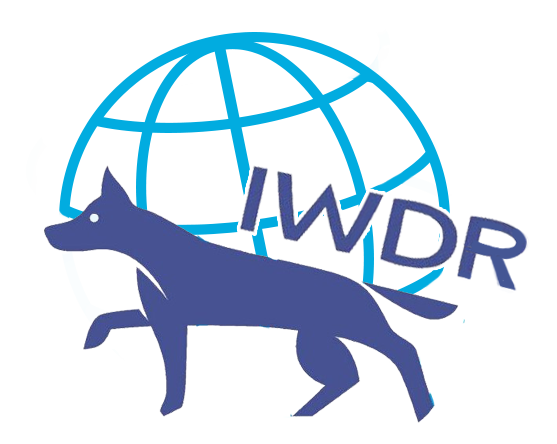Early Socialization - 5 Steps to Progressing Skills
![]() Make sure to review our Relationship Skills and Distance, Distraction & Duration information before working on skill development with the puppies.
Make sure to review our Relationship Skills and Distance, Distraction & Duration information before working on skill development with the puppies.
You will teach your pup skills in small, progressive steps. Your pup advances to the next step when a skill is performed consistently, and he can hold the position in a wide variety of familiar and unfamiliar settings. As you advance in the steps you will change the way you use food rewards. After Step 2, instead of rewarding the pup just for performing each skill, you will reward him for maintaining a skill or series of skills in familiar and unfamiliar locations. As your pup progresses, he should continue to Check In while maintaining Duration, despite Distraction, at a Distance, with praise and intermittent rewards from you. Your pup’s greatest reward will be positive interaction with YOU. Always progress through the 5 Steps when teaching your pup a new skill.
Skill or Behaviour(e.g. Sit, Drop Come, Stay, Place, etc.) | STEP 1 | STEP 2 | STEP 3 | STEP 4 | STEP 5 |
| Lure | No Lure – Ask for the skill then reward | Multiple skills and reward intermittently | Multiple skills with verbal cue or hand signal | Minimal support | |
| Puppy Age approximately 0-3 months | Puppy Age approximately 4-5 months | Puppy Age approximately 6-10 months | Puppy Age approximately 11-15 months | Puppy Age approximately 16-18 months | |
| Building Upon: Duration, Distraction, and Distance | |||||
| Always Maintain the Use of You | |||||
STEP 1: Use a Lure to teach your pup a new skill.
– Lure with food to teach the hand signal and pup’s position.
– Mark the behaviour with “Yes!”, reward quickly with the lure, Use of You, and release with “Free”.
– Practice in familiar and unfamiliar locations, building Duration and Distraction.
– Move to Step 2 when your pup is able to respond immediately to a verbal cue and hand signal in familiar and unfamiliar locations with low, moderate, and high Distractions. This should happen very quickly, within a week of your pup learning a new skill.
STEP 2: Ask for the skill, and then reward success.
– At this step, request your pup’s skill with the appropriate verbal cue and hand signal without using a food lure.
– Mark and reward immediately with Use of You and food after your pup performs the skill. Prompt delivery of the food reward in the early learning stages is essential. Quick access to food rewards can be achieved through the use of treat pouches.
– Vary the reward based on your pup’s response. Provide prolonged rewards for great responses!
– Practice in familiar and unfamiliar locations, building Duration, Distraction, and Distance.
– Move to Step 3 when your pup consistently responds in familiar and unfamiliar locations with low, moderate, and high Distractions.
STEP 3: Ask for multiple skills and reward intermittently.
– At this step, begin asking for multiple skills using verbal cues and hand signals.
– Build reliability by rewarding your pup for performing multiple skills (e.g. Name Response, then Sit, then Down, then mark and reward).
– Vary the reward based on your pup’s response. YOU are the primary reward for all responses; food rewards are a bonus for responding to the first request.
– Practice in familiar and unfamiliar locations building Duration, Distraction, and Distance.
– Move to Step 4 when your pup responds consistently to multiple cues in familiar and unfamiliar locations with low, moderate, and high Distractions.
STEP 4: Ask for multiple skills with a verbal cue or hand signal.
– At this step, begin to transition to using verbal cues and hand signals independently to request skills. Reward responses to the first verbal cue with food in preparation for Step 5 and Guide Dog work. If your pup needs a hand signal with the verbal cue, praise but do not use food rewards.
– Vary the reward based on your pup’s response. YOU are the primary reward for all responses; food rewards are a bonus for responding to the first verbal cue.
– If your pup needs help, return to Step 3 and continue to build his reliability.
– Practice in familiar and unfamiliar locations building Duration, Distraction, and Distance.
– Move to Step 5 when your pup responds consistently in familiar and unfamiliar locations with low, moderate, and high Distractions.
STEP 5: Build reliability of skills with minimal support.
– At this step, your pup should respond to verbal cues or hand signals given independently with little to no reward.
– Prompt responses to verbal cues should be rewarded with Use of You and food rewards.
– Practice in familiar and unfamiliar locations with all levels of Duration, Distraction, and Distance.
– Maintain this level of skill in all social outings.
- Your pup does not consistently respond at the current step.
- Do not return to luring.
- Adjust the 3 D’s.
- Remember to use a high rate of reinforcement (reward every correct response initially) with Use of You and food rewards.
- Practice more frequently in a wide variety of familiar and unfamiliar locations.
- Progress through the 5 Steps in order.
- At each step, practice in familiar and unfamiliar locations while increasing Duration, Distraction, and Distance.
- Progress to the next step when you have consistent responses at the current step.
- Steadily decrease the amount and frequency of food rewards as you progress through the steps.
Lorem ipsum dolor sit amet, consectetur adipiscing elit. Ut elit tellus, luctus nec ullamcorper mattis, pulvinar dapibus leo.
